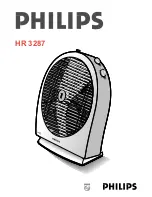
7
Installation
100 mm
Siphon
To internal drain
Extract Air
Fresh Air
Supply Air
Exhaust Air
Lack of water in siphon = water damage
1%
Duct insulation, alt. A
Duct insulation, alt. B
Faulty duct insulation
Condensate drain
The units produce up to 10 litres of condensate per day. It
is therefore important that the condensate drain is correctly
executed and that the unit has a slight fall towards the
condensate drain.
The condensate drain pipe must be air tight for example by
bending a copper pipe as an siphon (see sketch to the left).
Use an armed water hose between the drain connecting
piece on the unit and the siphon and tightend it in both
ends with a collar band.
From the siphon and to the internal outlet there must be
a necessary fall on 1%. The condensate drain must be
fitted with a water trap as there is negative pressure in the
chamber in which the condensate tray is mounted.
If the unit is installed in a cold loft space, the condensate
drain pipe must be insulated to prevent freezing of the
condensate in the pipe. However, it is recommended that
the water trap is installed in a heated space below to
ensure that the water in it does not freeze.
If installation problems make it impossible to secure the
condensate drain pipe from freezing by insulation, it will be
necessary to mount a thermostat-controlled heating tape
round the condensate drain pipe.
Insulation of ducts in cold loft spaces
In order to exploit the unit’s high recovery potential
(efficiency), it is necessary to insulate the ducts correctly.
Supply and extract ducts:
To minimise heat losses from the duct system in cold loft
spaces, the supply and extract ducts must be insulated
with a minimum of 100 mm insulation. If insulation form
alternative A is used, it is recommended that it is executed
with two layers of 50 mm lamella mats with paper or foil
externally and with staggered joints between the two
layers. If the ducts are laid on the rafter foot, alternative B
may be used. The insulation must always be tightly packed
round the ducts.
Fresh air and escaping ducts in cold spaces:
It is recommended that fresh air and escaping ducts
are insulated with a minimum of 50 mm insulation. The
fresh air duct is insulated to prevent warm air in the loft in
summer from heating up the fresh air. Take care to seal the
termination where the escaping duct is led through the roof
or through the gable end, in order to avoid condensation
damage.
GE Energy 1 - 3
Содержание GE ENERGY 1
Страница 15: ...15 Installation EU Declaration of conformity...


































